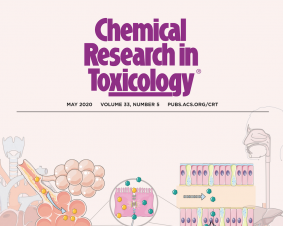 >
Spotlight November 2022: Photonics in nature and bioinspired designs
>
Spotlight November 2022: Photonics in nature and bioinspired designs
Science has always taken nature as a model and imitated it. If you look at the field of photonics, i.e. the use of optical technologies for information processing, transmission or storage, the colorful examples in the animal and plant world are perfect basic drawers for technical applications.
While colors in nature are used either for communication, mating, camouflage, or as a defense mechanism, science is trying to translate them into engineering applications.
In the review “Photonics in nature and bioinspired designs: sustainable approaches for a colorful world” published by Raquel Vaz, Manuela F. Frasco and M. Goreti F. Sales, the authors describe the variety of colors in nature and on which physical phenomena, for example, the color change of chameleons is based. They show how science is using the underlying mechanisms to develop novel materials and applications from photonic crystals, colored biomaterials or optical sensors.
The colors found in nature come from either physical processes such as reflection or diffraction or chemical processes such as bioluminescence. The review article focuses on physical processes in which a certain structure that interacts with light is decisive for the colors we perceive. For example, the color of butterflies’ wings is caused by the nanostructure of chitin. Some fruits of trees are blue because the structure of cellulose reflects only blue light.
Derived from nature, numerous materials are suitable as photonic biomaterials. In general, the color or a change in color indicates a change in the environment of the material and can therefore be used as an indicator that is easily perceived by humans. Applications of such “indicators” include pharmaceuticals, where the release of drugs from a capsule can be monitored by a color change.
In the field of sensor technology, a change in color can be used to indicate a change in temperature or pH value. So-called “smart” plastic materials are used for this purpose, among others. They are able to detect changes in pH and temperature simultaneously. Other plastic materials can detect heavy metals or pollutants or are able to indicate the presence of biological warfare agents.
Many photonic applications are currently under development. For example, wearable photonic devices may be applied in determining health data such as measuring heartbeat or respiration. Other future application areas include better treatment of cancer or faster self-healing for tissue damage.
The field of photonics shows promising approaches for new materials and applications that cannot be realized with common dyes. Thus, photonics is a field of research from which many new developments for the diagnosis of diseases, the encapsulation of drugs or for the monitoring of chemicals in the environment can be expected in the future.
Original publication:
Vaz, Raquel and Frasco, Manuela F. and Sales, M. Goreti F. (2020). Photonics in nature and bioinspired designs: sustainable approaches for a colourful world. Nanoscale Adv.,2, 5106-5129.
This article is part of the themed collections: US National Nanotechnology Day, 2022.

Weitere Spotlights
Spotlight June 2021: Endotoxin – the reason for false-positive toxicity testing for advanced materials?
Advanced materials, but also nanomaterials are closely examined to determine whether they trigger biological effects that could be harmful to humans and the environment before they are used in products. This also includes such materials as titanium dioxide, which has been used in a wide variety of products for more than 50 years. A particularly […]
Read moreSpotlight October 2020: Nanosafety – Topic of the Future
Research on nanosafety is a driver of innovation as the spotlight in July has demonstrated. But furthermore, this research field is built on routine as well if researchers look for the “needle in the haystack”. In many areas the safety research initiates the development of new methods, e.g. for the determination of nanoparticles within exposed organisms via […]
Read moreSpotlight April 2022: A new risk assessment of nanomaterials in 3D printing is needed
The use of nanomaterials in 3D printing has great potential. Due to the properties of nanoscale materials, many requirements can be implemented in 3D printing. However, these unique properties based on the size of the particles also lead to the need for new risk assessments. This is because if the nanoparticles are released in the […]
Read moreSpotlight April 2023: Recycling rare earths – bacteria assist in the circular economy
Rare earths are important components of wind turbines, catalytic converters, fibre optic cables and plasma screens. Since the 17 metals grouped under this term are indispensable for modern technologies, demand and costs are constantly rising. The occurrence of productive mining sites is limited and the production is often costly and environmentally harmful. The advantages of […]
Read more


